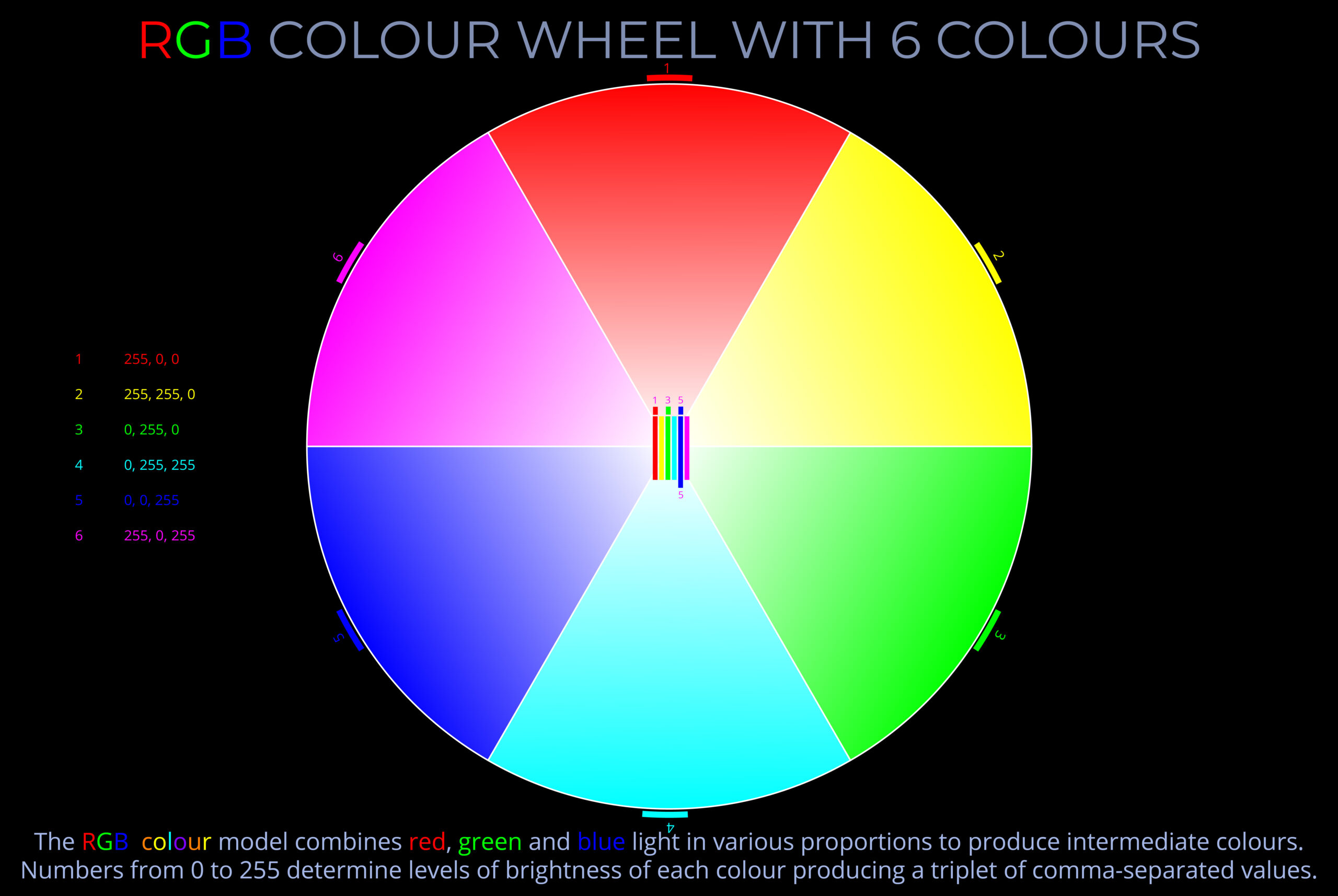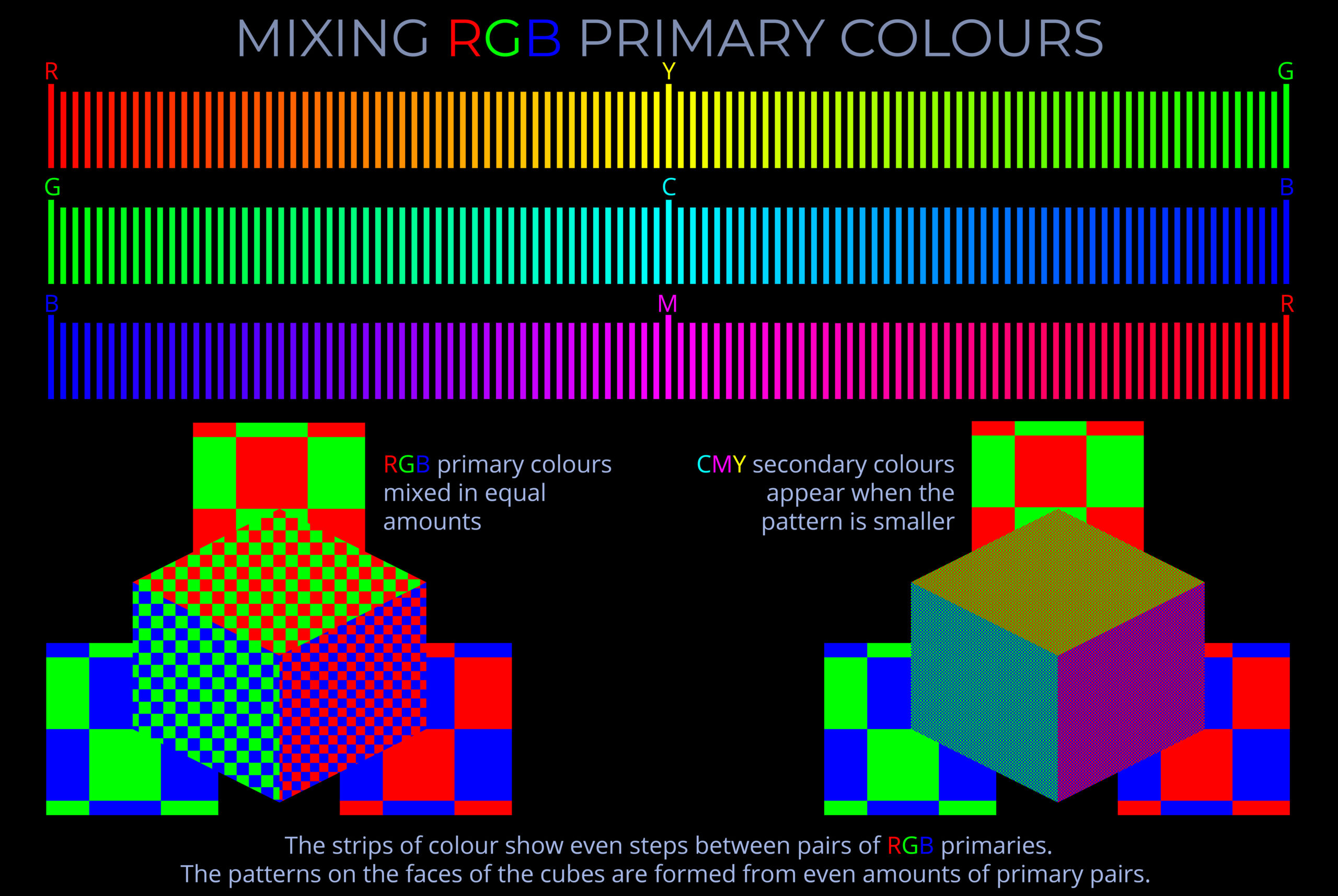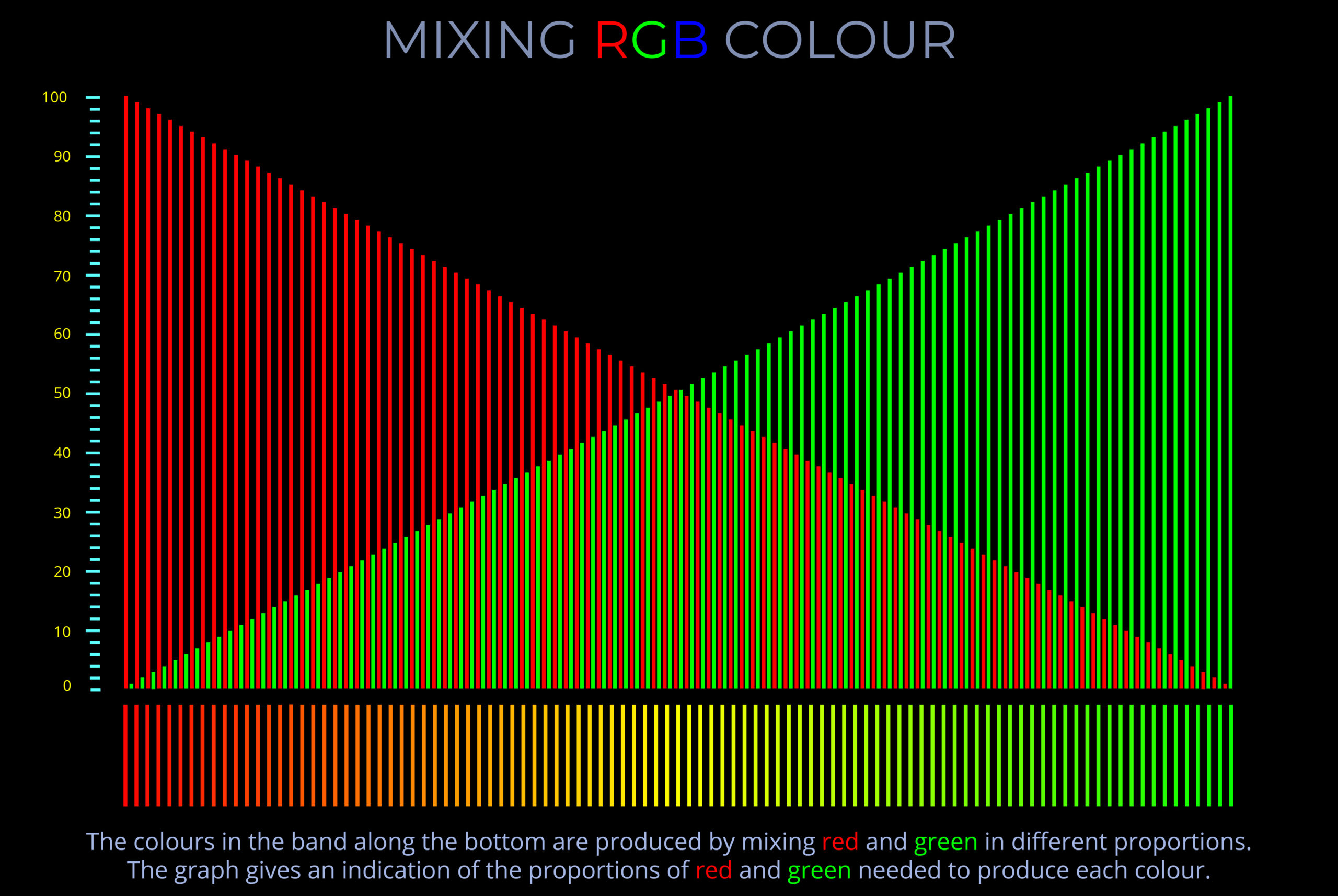Primary colours are sets of colours from which other colours can be created by blending coloured lights or mixing pigments and dyes.
- Human perception of colour is based on the sensitivity of the eye to the electromagnetic spectrum, specifically the visible spectrum of light that includes spectral colours between red and violet.
- A set of primary colours is a set of coloured lights or pigments that can be combined in varying amounts to create a wide range of colours.
- Different sets of primary colours are used for additive colour mixing (of light) and subtractive colour mixing (of pigments).
- Colour models such as RGB, CMY and RYB use different sets of primary colours.
- The process of combining colours to produce other colours is used in applications such as electronic displays and colour printing to create a range of colours that can be perceived by humans.
- Additive and subtractive colour models can be used to predict how wavelengths of visible light or pigments interact with each other.
- RGB colour is a technology used to reproduce colour in ways that match human perception.
- The primary colours used in colour-spaces such as CIELAB, NCS, Adobe RGB (1998), and sRGB are determined by an extensive investigation of the relationship between visible light and human colour vision.
- An important point to note is that while there are several different sets of primary colours, there is no universally agreed upon set of primary colours. Different colour models and industries use different sets of primary colours. The specific hue that correspond with each primary colour can also vary depending on the colour model , colour space and mediums concerned.
References
- Primary colours are sets of colours from which other colours can be created by blending coloured lights or mixing pigments and dyes.
- Human perception of colour is based on the sensitivity of the eye to the electromagnetic spectrum, specifically the visible spectrum of light that includes spectral colours between red and violet.
- A set of primary colours is a set of coloured lights or pigments that can be combined in varying amounts to create a wide range of colours.
- Different sets of primary colours are used for additive colour mixing (of light) and subtractive colour mixing (of pigments).
- Colour models such as RGB, CMY and RYB use different sets of primary colours.
- The process of combining colours to produce other colours is used in applications such as electronic displays and colour printing to create a range of colours that can be perceived by humans.


